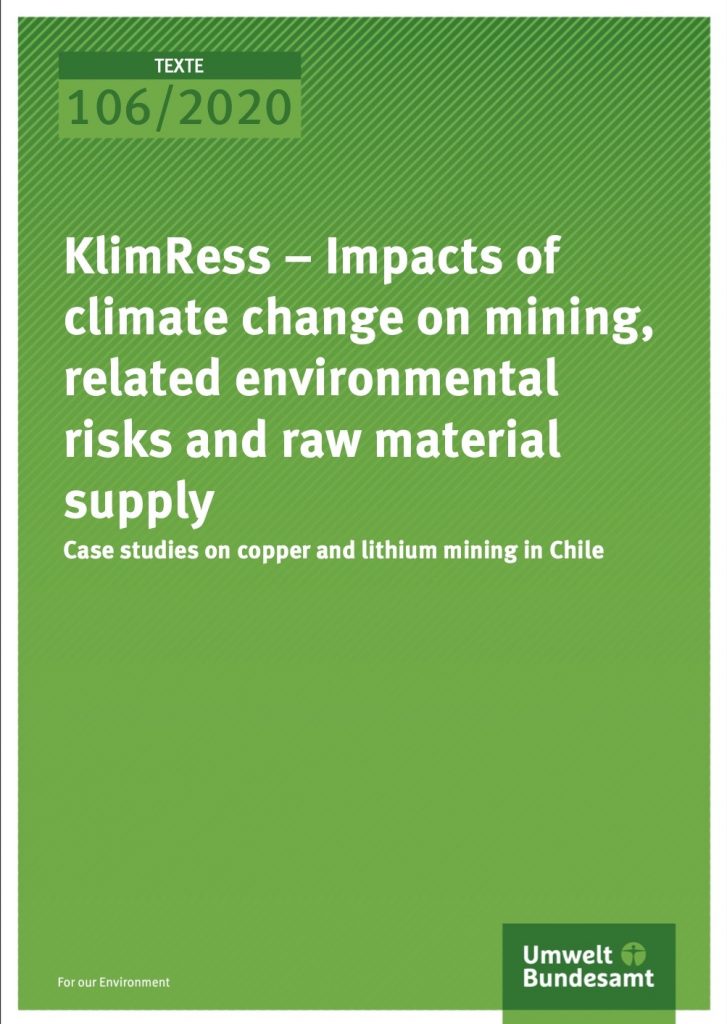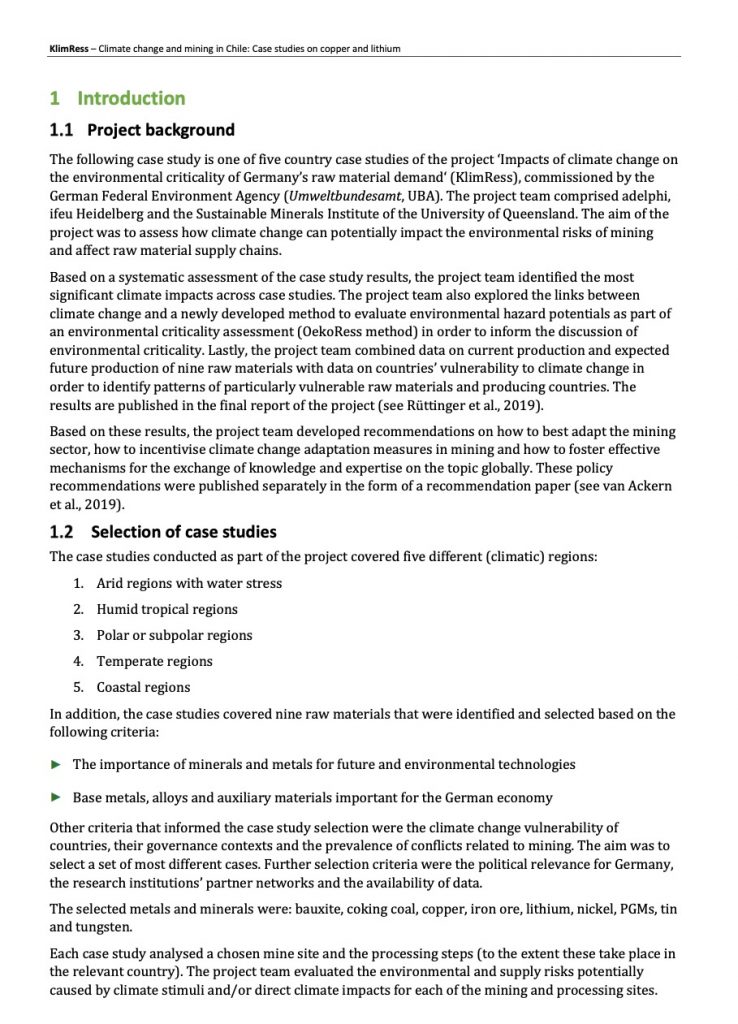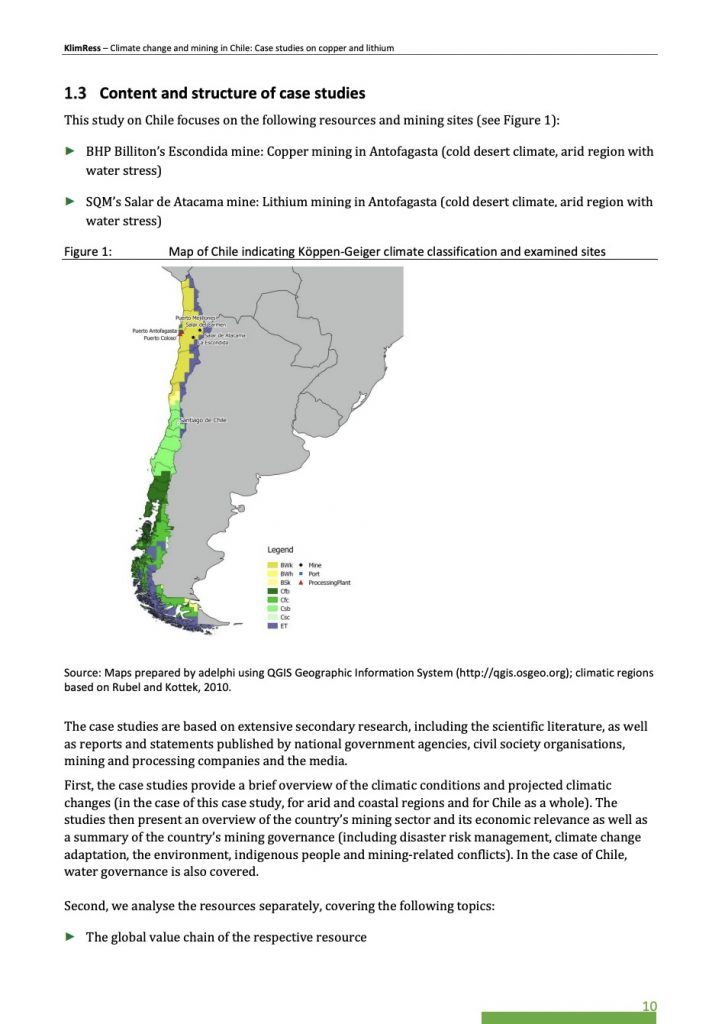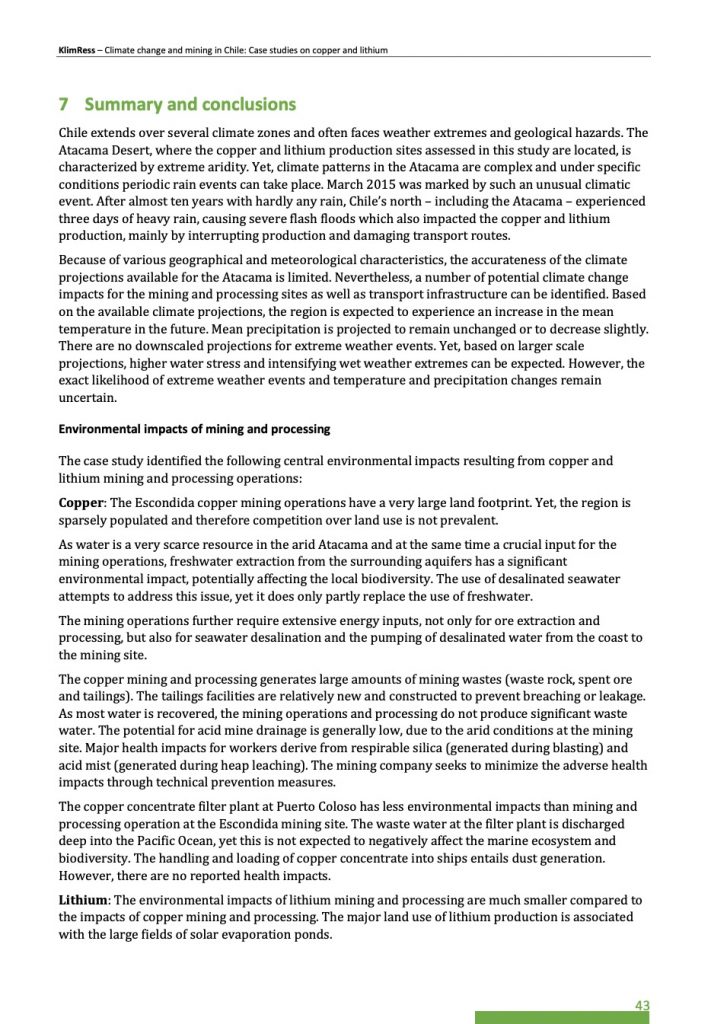
This source is a case study from the German Environmental Agency on the impacts of climate change on mining in Chile. The study covers 5 different climate regions and selected metals and minerals, one of them being copper. It also specifically focuses on the Escondida mine in Chile. This study is to determine current environmental impacts, and climate change impacts and risks. The results of the study provides evidence that the Atacama Desert, where copper production sites are located, will continue to increase in temperature, while decreasing in precipitation. As water is already scarce in this region, and because copper mining requires large inputs of water, this could become a bigger problem. The Escondida copper mine, in this region is also said to be leaving a large environmental footprint, as it produces large amounts of waste. Finally, the report summarizes the negative health impacts on the miners, concluding that the mines are implementing preventative measures.
This case study is an interesting primary source. First, in my opinion, the performers of this case study seem to be interested in the effects of mining because of environmental change. They aren’t producing this study to advocate for more concern for the environment. They seem to want the production of mining to remain strong. They are simply evaluating how the inevitable climate change will affect production of these minerals. Although their beliefs don’t align with my own, their research is still useful. There are still claims of environmental destruction in these case studies, and they are proven through the procedures and experiments conducted by this group. This is a solid source to evaluate how the environment is effect by copper mining in a more modern day and age, as this study was from 2019.



“KlimRess – Impacts of climate change on mining, related environmental risks and raw material supply: Case studies on copper and lithium mining in Chile”, Environmental Research of the Federal Ministry for the Environment, Nature Conservation and Nuclear Safety. (January, 2018) https://www.umweltbundesamt.de/sites/default/files/medien/479/publikationen/texte_106-2020_klimress_case_study_chile.pdf